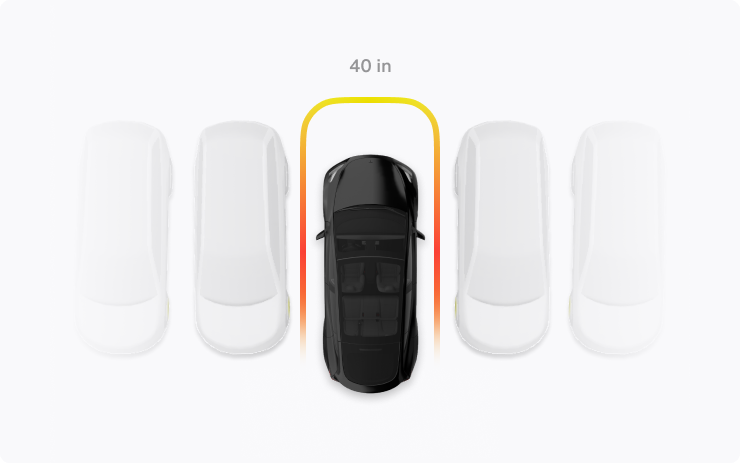Tesla Vision Park Assist Launches for Cars without Ultrasonic Sensors in 2022.45.11 Update

Back in October 2022, Tesla announced it would be removing ultrasonic sensors from its cars, stating it was the next step of its camera-based Tesla Vision Autopilot.
The transition from ditching these ultrasonic sensors meant the following features would be limited or inactive, said Tesla at the time:
- Park Assist: alerts you of surrounding objects when the vehicle is traveling <5 mph.
- Autopark: automatically maneuvers into parallel or perpendicular parking spaces.
- Summon: manually moves your vehicle forward or in reverse via the Tesla app.
- Smart Summon: navigates your vehicle to your location or location of your choice via the Tesla app.
Now, it appears Park Assist is set to debut without the need for ultrasonic sensors. That’s according to code spotted by @greentheonly in the 2022.45.11 software update that started rolling out last night, which contains Full-Self Driving (FSD) beta version 11.3.2.
“Looks like 2022.44.11 includes the new vision autopark for USS-less cars,” said @greentheonly on Sunday. He meant to refer to 2022.45.11.
The feature is described, “Tesla Vision Park Assist provides visual and audio alerts of surrounding objects. This feature uses the occupancy network to predict high-definition outlines of objects 360 degrees around the car.” You can see an image asset also shared by @greentheonly above.
Looks like 2022.44.11 includes the new vision autopark for USS-less cars:
Tesla Vision Park Assist provides visual and audio alerts of surrounding objects. This feature uses the occupancy network to predict high-definition outlines of objects 360 degrees around the car. pic.twitter.com/IdqwaGuzE2— green (@greentheonly) March 19, 2023
Tesla Vision relies on camera data and machine learning algorithms to interpret and analyze the surrounding environment, enabling features like Autopilot and Full Self-Driving (FSD) capabilities. Tesla Vision is designed to replace the need for radar and lidar sensors in autonomous driving.
Despite the camera-based setup for Tesla Vision, there have been signs a new high definition radar is coming back to Tesla vehicles.
With the Tesla Vision system, the car’s cameras capture visual data, which is then processed by the onboard computer. The system recognizes and tracks objects, such as other vehicles, pedestrians, cyclists, traffic signs, and lane markings, to provide a comprehensive understanding of the driving environment. This information is used to make decisions on steering, acceleration, and braking, allowing the car to navigate safely and efficiently.
Tesla has been continually refining and updating Tesla Vision through over-the-air software updates, enhancing the performance and capabilities of their vehicles’ Autopilot and FSD systems. The company’s goal is to achieve full autonomy with the Tesla Vision system, enabling their vehicles to navigate complex driving situations without human intervention.
